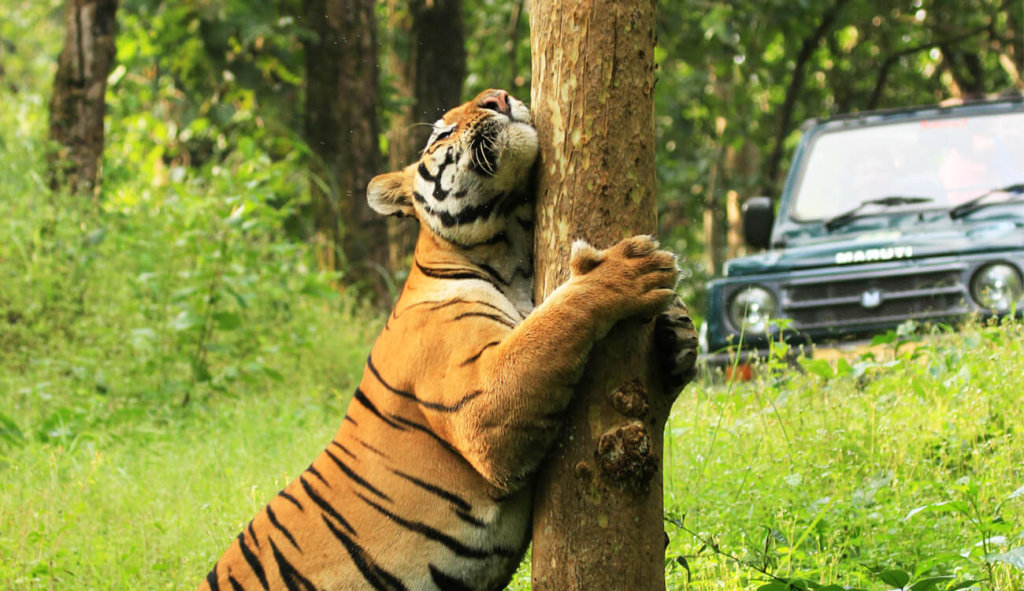With the monsoons at an end, the Indian sub-continent gets a new lease of life and is celebrated by all. Ganesh Chaturthi marks the beginning of the festive season which extends into the harvest season. The jungles of India too are born again after the much needed rains following the harsh Indian summer. This is the ideal season to watch the wild in action. We welcome you to join us to experience the wilderness, away from the usual safaris meant to entertain and not to educate, our expert naturalists will open the magic door to these woodlands for you to be mesmerized.
The Saga of Tigers

During the last season, Choti Mada – one of the popular female tigers of Kanha Tiger Reserve, gave birth to a litter of three cubs. Unfortunately, she lost all three cubs to an intruding male tiger. Later on, she produced another litter of three cubs but two of them perished. Choti Mada is now an old tigress and this may be her last chance at being a mother. Let us hope that the lone surviving cub does well.
Close to the end of the last season, another young tigress from Kanha, MB-3, gave birth to three cubs. Yet another popular tiger from the accessible area of Mukki Zone of Kanha, Dhawajhandi female is now free of her motherhood duties. The last of her litter has split from her and gone their own way. She might be close to giving birth to a new litter soon. All this is heart-warming to see, with an increasing number of tigers in the wild and a healthy competition among them for the mating rights, the promises of the upcoming season in Kanha will be an exciting one, with possibly a lot of sightings of mother tigers raising and protecting their cubs.
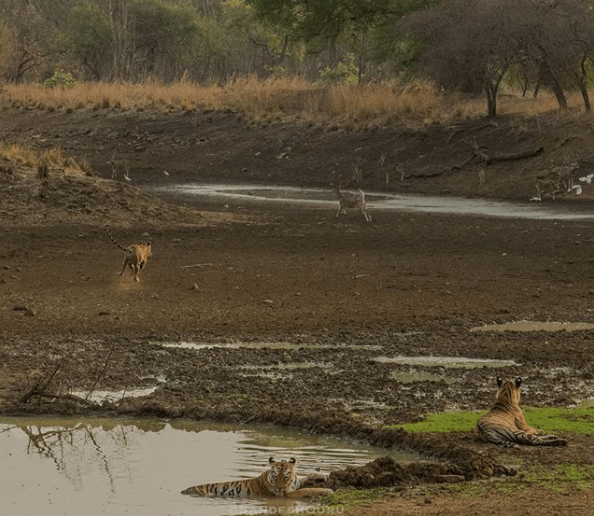
A little to the south, Tadoba National Park is bustling with a healthy population of the apex predators. Seen here are the sub-adults almost ready to head out on their own. The young tiger here is playing at the hunting game, for now, making attempts at any prey it sees nearby. This builds strength and tact in the sub-adults and showcases their strength and readiness to head out on their own.
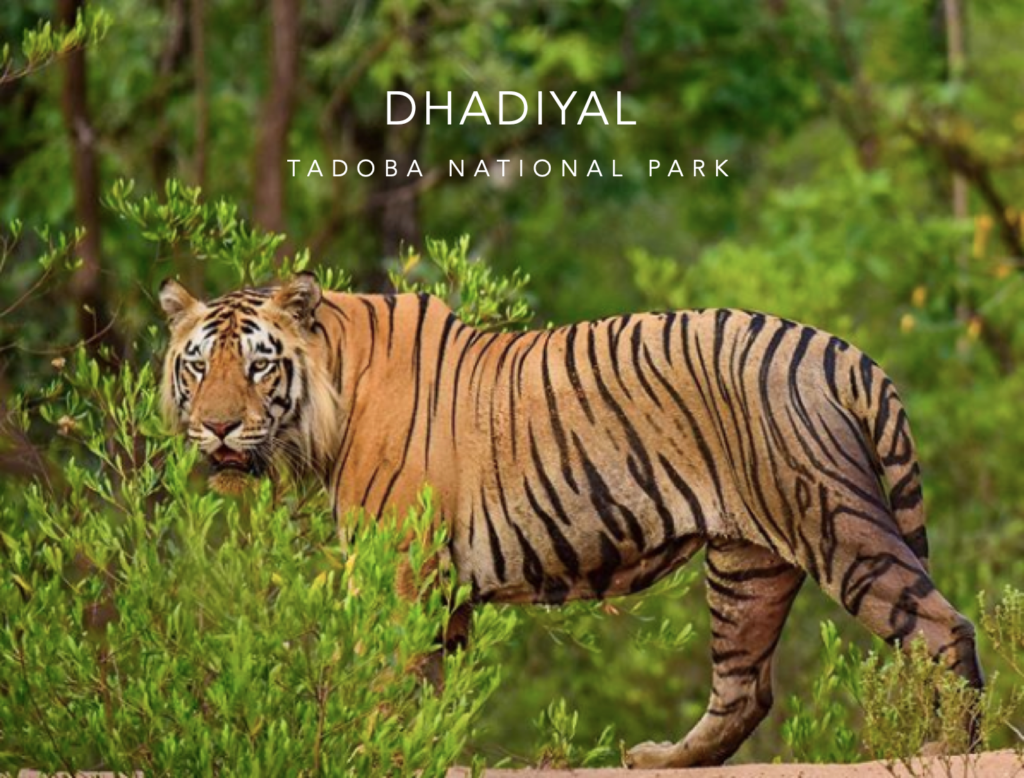
Seen here is the majestic tiger in its prime, Dhadiyal, named so for his handsome rough, starting from right under his ears forming an unbroken mane adding to the majesty and grandeur of this guardian of the sacred forest. It is indeed a testament to the efforts of the various stakeholders that these majestic creatures again are living emphatically growing in number and strength. Hope the positive trend continues. We as guests of the forest should understand about the perils that the jungles and their inhabitants face today. Our naturalists working with all the partner hotels are the best guides to educate you.
It is indeed a testament to the efforts of the various stakeholders that these majestic creatures again are living emphatically growing in number and strength. Hope the positive trend continues. We as guests of the forest should understand about the perils that the jungles and their inhabitants face today. Our naturalists working with all the partner hotels are the best guides to educate you.
Beyond the Tigers
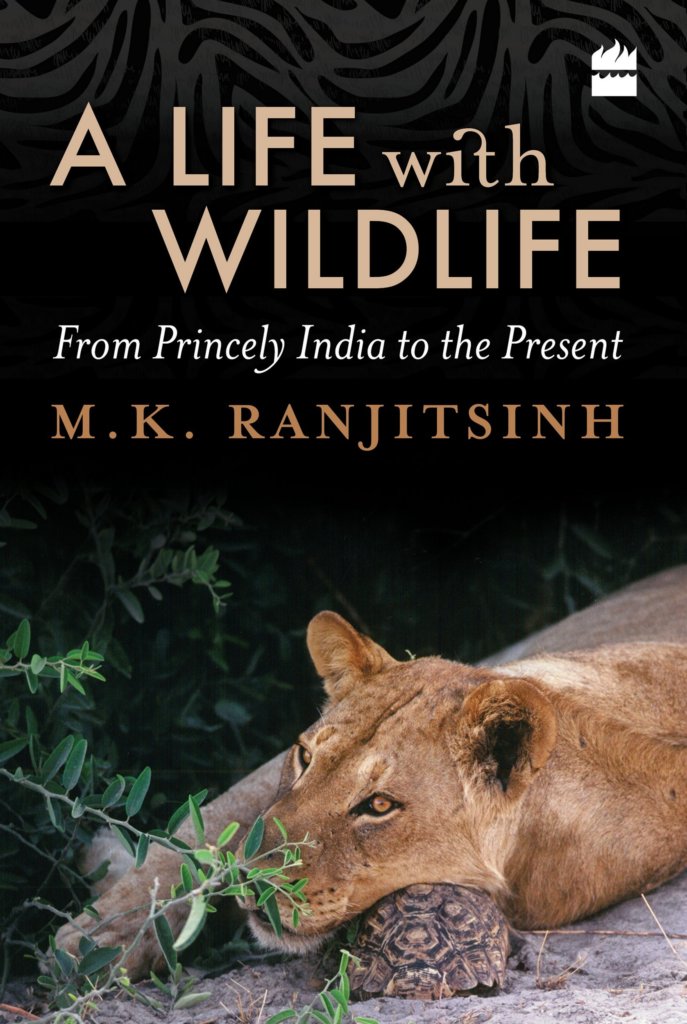
Heeding to the wise words of Dr M K Ranjithsinh, the grand old man of Indian conservation, we should move away from Tiger Tourism and learn to appreciate the forest as a far more complex entity with the smallest plant or animal contributing the same to the well being of the forest as do the large trees and apex predators. Let us glimpse a few of these shy creatures who get more fascinating, the more we learn of them.
Bottom of the Food Chain
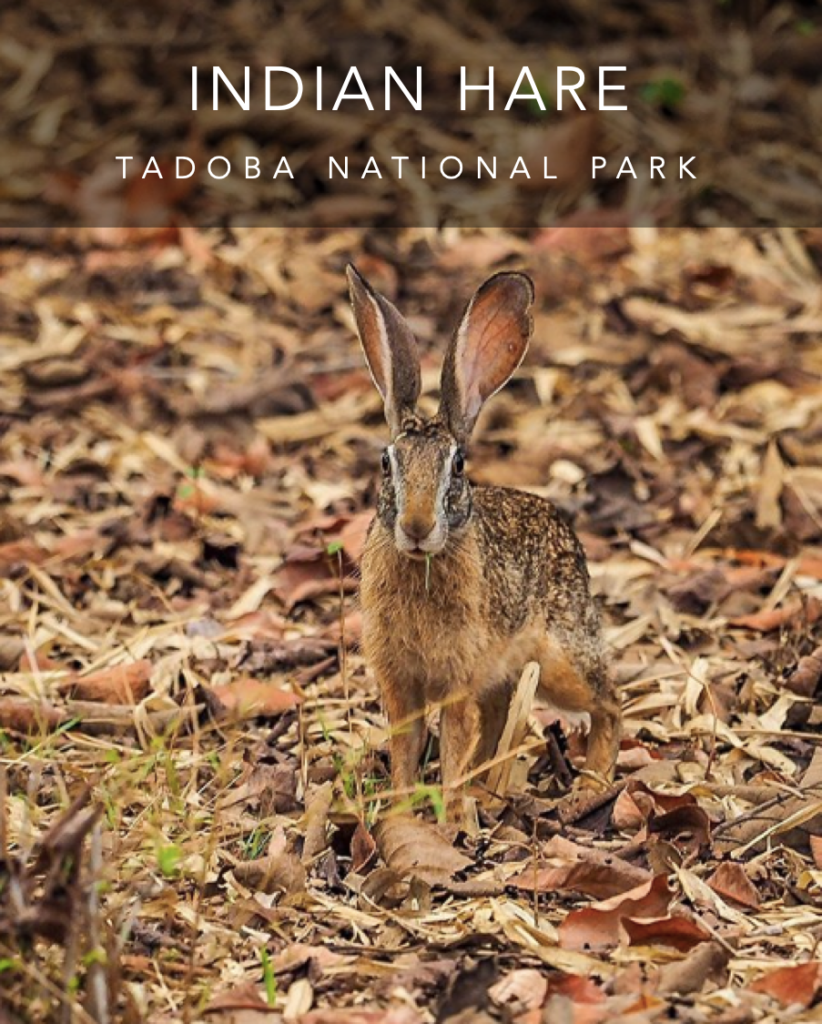
The Indian hare is at the bottom of the food chain, yet forms an integral part of the jungle, the one we generally overlook. But dig deeper and you will see they lead their own complex stories in the tapestry of jungle tales.
A peep into the Camera Traps
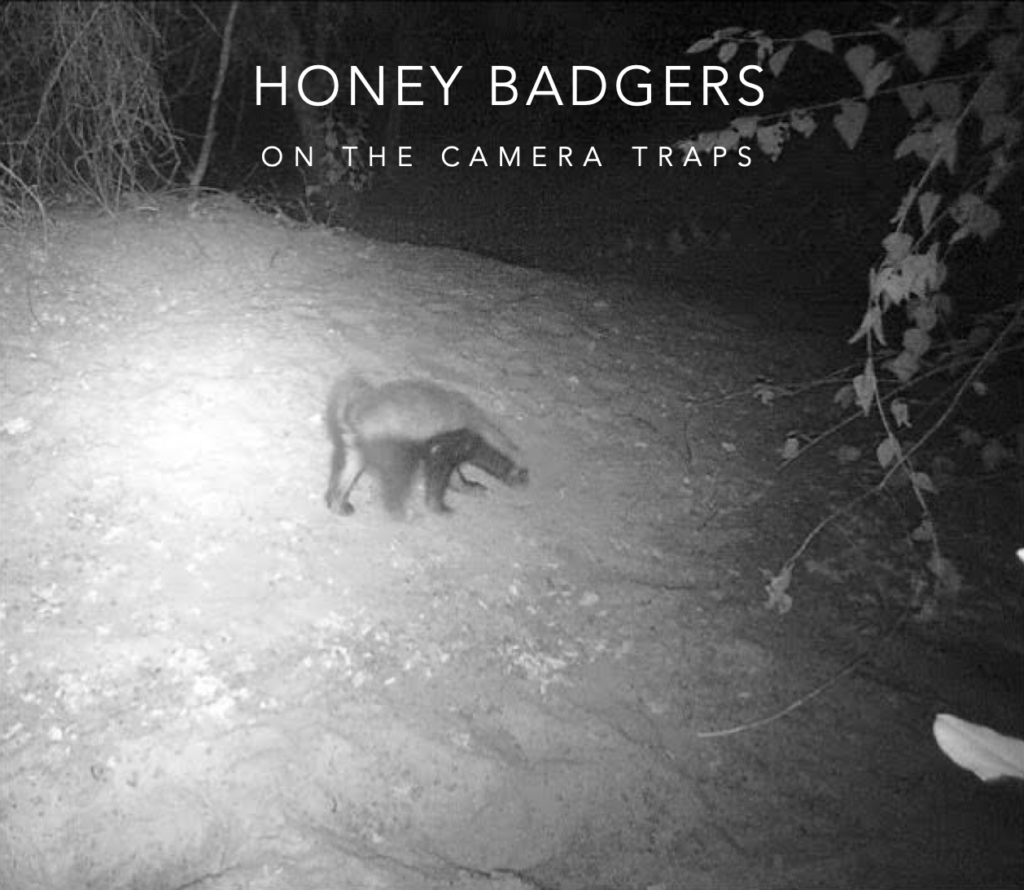
The honey badgers have a reputation of being the most fearless animals, having a mean defensive attack of any beast. Yet they are shy and in places of high human traffic such as the safari routes, are hard to come by during the day. Camera traps, tactfully set by our naturalists have captured these fascinating creatures.
Wings of Glory

Moving to our avian friends, Jerdon’s Baza is a medium-sized raptor, mostly recorded in the Northeastern part of the country and in the Western Ghats of South India. It is seldom recorded in Central India, but there have been a few records in the past from Kanha. In fact, some people have even observed pairs on occasions in Kanha, raising a suspicion that the bird might be breeding in Kanha. Surprisingly, over the span of the last season, Jerdon’s Baza sightings were quite frequent in Kanha. Our guests even saw a pair together on one occasion, further feeding to the suspicion of the breeding status of the bird in Kanha. Regardless of whether the bird breeds in Kanha or not, the regular sightings of this uncommon raptor did make some birdwatchers in Kanha very happy for a long time.
A male, baya-weaver busy inspecting the nest!
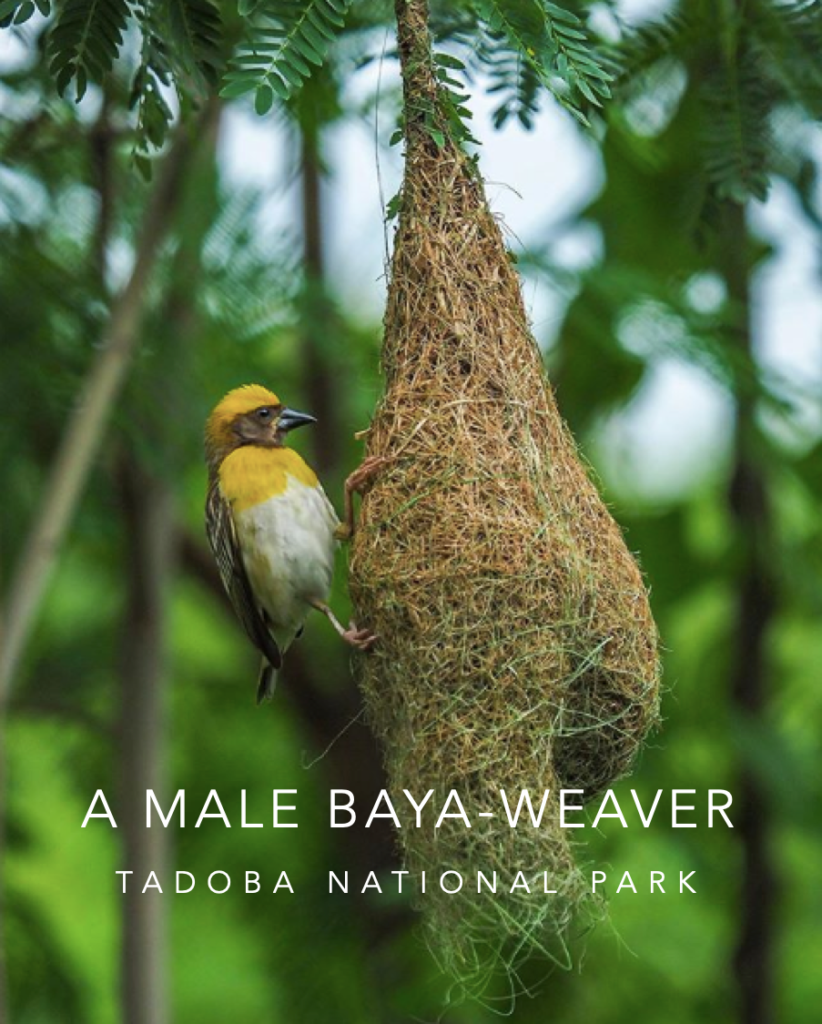
Most creatures get busy with their breeding rituals during the monsoons. The male baya weavers are excellent architects and a tad bit paranoid! With a lot of patience and perseverance, they start building the nest to attract the females and court with them. What if the female rejects positioning or the shape of the nest you ask? The male will abandon the nest and has to rebuild a new one for her. The Baya Weavers are one the most active birds found at the Bamboo Forest Safari Lodge during the monsoons.


